The beginnings of the Missionary Society in the long and hopeful horizon of the Missions in Peru. 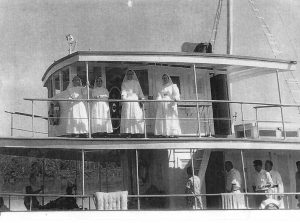 The Passionist priests, express the need of the collaboration of Missionaries in order to establish themselves in Lagunas. They settle down in the Parish of Lagunas, a town located in the righthand bank of the river Huallaga, attended by two Passionist missionaries. On March 12, 1951, they arrived at Lagunas. At that time, Lagunas District had about 8,000 inhabitants, of which 80% were Kukamillas and 20% were Mestizos and Ribereños. When they arrived, they are struck by the religious ignorance they find in people.
The Passionist priests, express the need of the collaboration of Missionaries in order to establish themselves in Lagunas. They settle down in the Parish of Lagunas, a town located in the righthand bank of the river Huallaga, attended by two Passionist missionaries. On March 12, 1951, they arrived at Lagunas. At that time, Lagunas District had about 8,000 inhabitants, of which 80% were Kukamillas and 20% were Mestizos and Ribereños. When they arrived, they are struck by the religious ignorance they find in people. 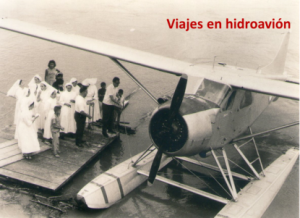 School, Internship, Dispensary, Family Visits and Catechesis were their first activities to which they dedicated themselves with their whole heart and soul. The experience showed them the marked differences between the New area and the Central area, which would require different approaches. Soon the Apostolic visits began. In 1952, visits to ARAHUANTE for health care began. Later, the town asked for education and religious formation. The contact with the Muratos of the NUCURAY River began in 1973. The first Peruvian vocation in the Society was Angelica Arce Rodriguez, a 19-year-old girl. Died this year, 2018. In the decade of the 80s, the Educational Institutions of the town were in increase. Health services were in the hands of the Health Ministry. In this way, the sisters were asked to reflect on whether our permanence in this Mission was necessary. The decision was to leave Lagunas to the Vicariate. At the beginning, on the 23rd and 24th of January 1987, a Conference was celebrated as a POPULAR TRIBUTE OF THANKSGIVING for the 36 years of the presence of the sisters in Lagunas.
School, Internship, Dispensary, Family Visits and Catechesis were their first activities to which they dedicated themselves with their whole heart and soul. The experience showed them the marked differences between the New area and the Central area, which would require different approaches. Soon the Apostolic visits began. In 1952, visits to ARAHUANTE for health care began. Later, the town asked for education and religious formation. The contact with the Muratos of the NUCURAY River began in 1973. The first Peruvian vocation in the Society was Angelica Arce Rodriguez, a 19-year-old girl. Died this year, 2018. In the decade of the 80s, the Educational Institutions of the town were in increase. Health services were in the hands of the Health Ministry. In this way, the sisters were asked to reflect on whether our permanence in this Mission was necessary. The decision was to leave Lagunas to the Vicariate. At the beginning, on the 23rd and 24th of January 1987, a Conference was celebrated as a POPULAR TRIBUTE OF THANKSGIVING for the 36 years of the presence of the sisters in Lagunas.

RESTRUCTURATION IN PERU: The need for a Realistic Planning remained latent until the VIII G. A. propose the RESTRUCTURING and start the process. The General Government helped with appropriate materials and techniques. Until, in January 2017, in Lima, they reached the final stage.

Many years of dedication in the field of education, health and training of pastoral agents. Many bonds of fraternity have been created with people, who know that the sisters are there among them and for them. We take care of the Christian community and we participate very actively in the organization of the village.
Still in the field of education, today we are working on a UNESCO rural secondary school program in Peru, "Horizontes", which is supported by the Vicariate. The goal is to enable adolescents to complete their secondary education, strengthen their socio-emotional skills, their individual identity and their intercultural citizenship. We also work in the area of human rights of the social pastoral of the Vicariate of Jaén, coordinating, with other institutions, activities and workshops in various indigenous communities.
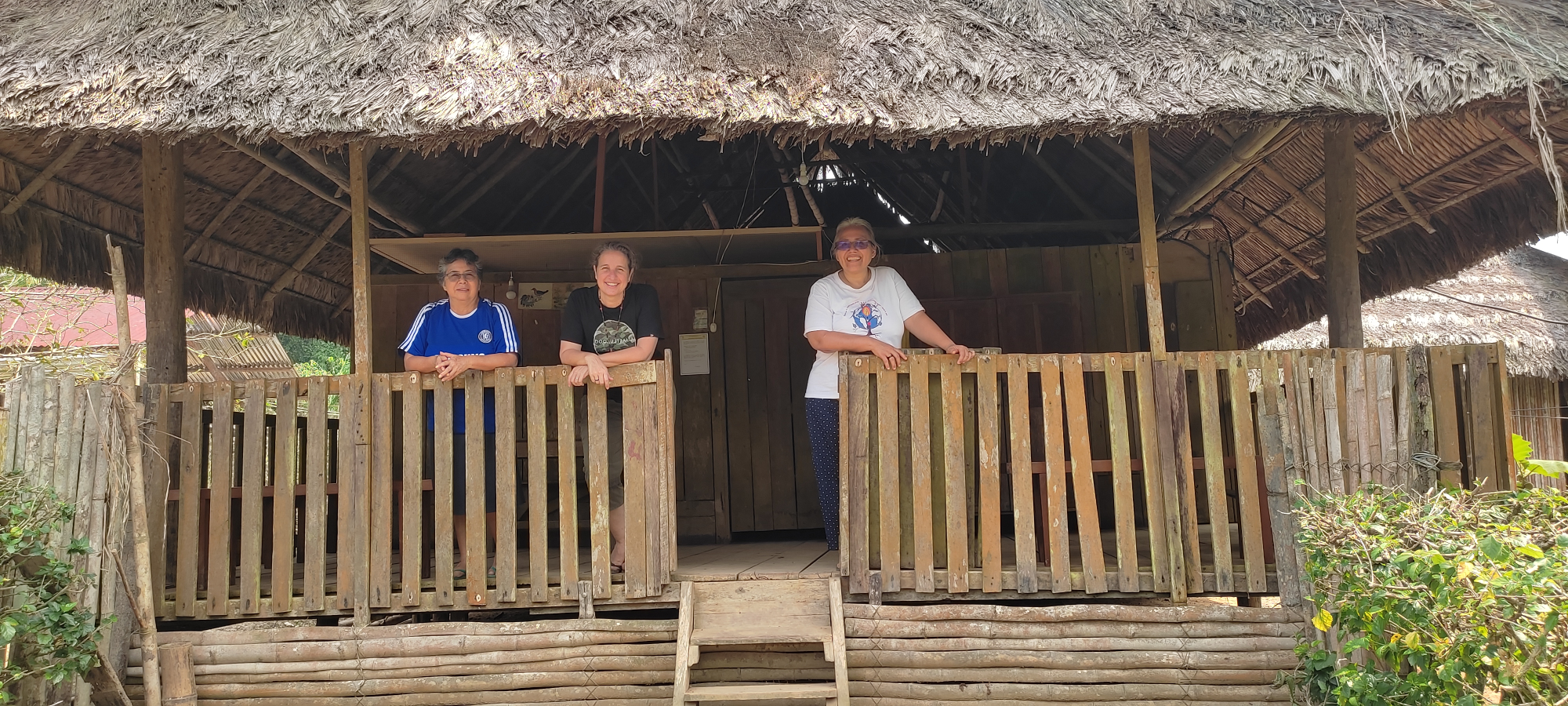
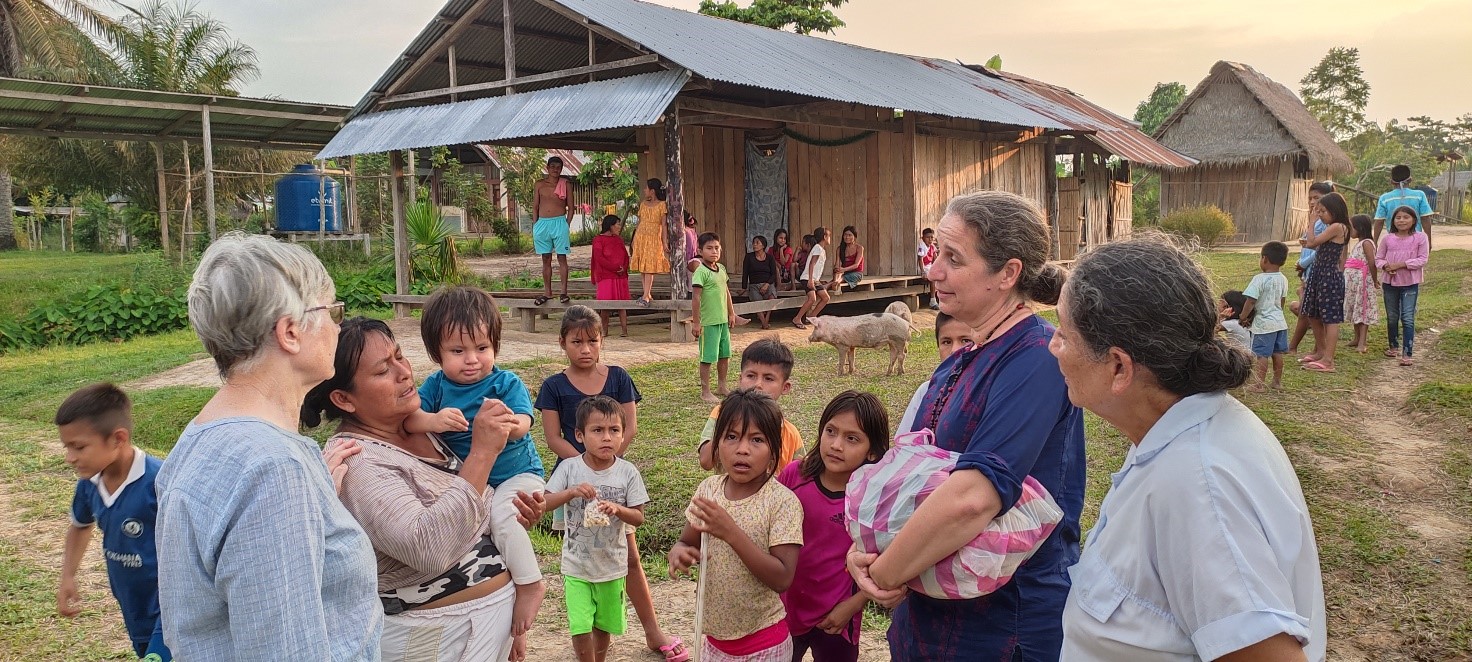
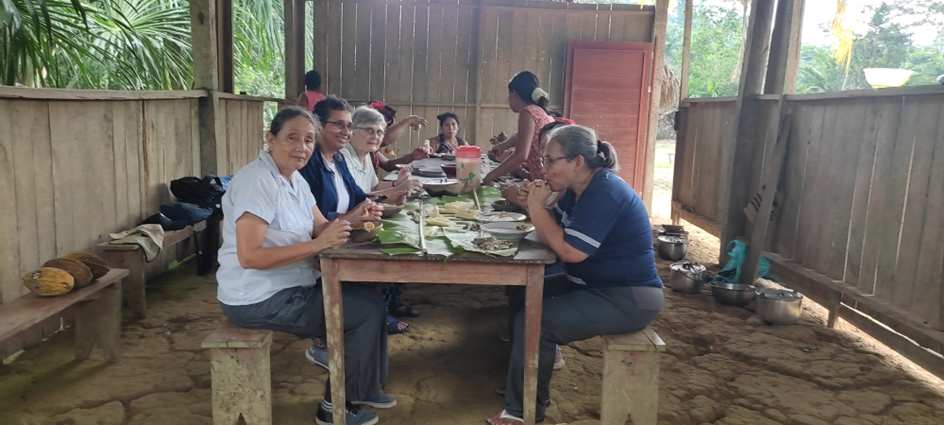
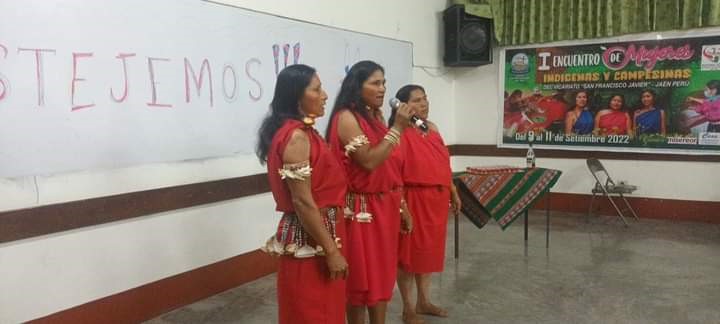

This new presence in "LA PAZ" is a journey started as a community in 2012, as part of the restructuring process of the region of Peru. Today, it is a new mission field within the Church, to serve populations who migrate to the outskirts of cities in search of greater opportunities, but who also find even greater needs and problems .
Since 2016, they have settled in a peripheral neighborhood of the invasion called La Paz. The majority of the population are indigenous people of the Shipibo-Konibo ethnic group and a large number of families come from Macaya where they lived from 1977 to 2015. For now, the community visits Macaya periodically according to a schedule established in beginning of the year.
Since our arrival, and with our purpose in mind, we have dedicated ourselves to visiting our Métis neighbors and those from the Shipibo-Konibo settlements and communities who live here.
Since COVID, they have managed a popular kitchen where around a hundred prepared meals are distributed every day, a group of women organize themselves to take turns preparing and one of them ensures coordination.
We participate in the Christian community during the Sunday celebration and other activities of the parish, and they participate in the formation of seminarians in the propaedeutic phase of the inter-vicarial seminary of Pucallpa.


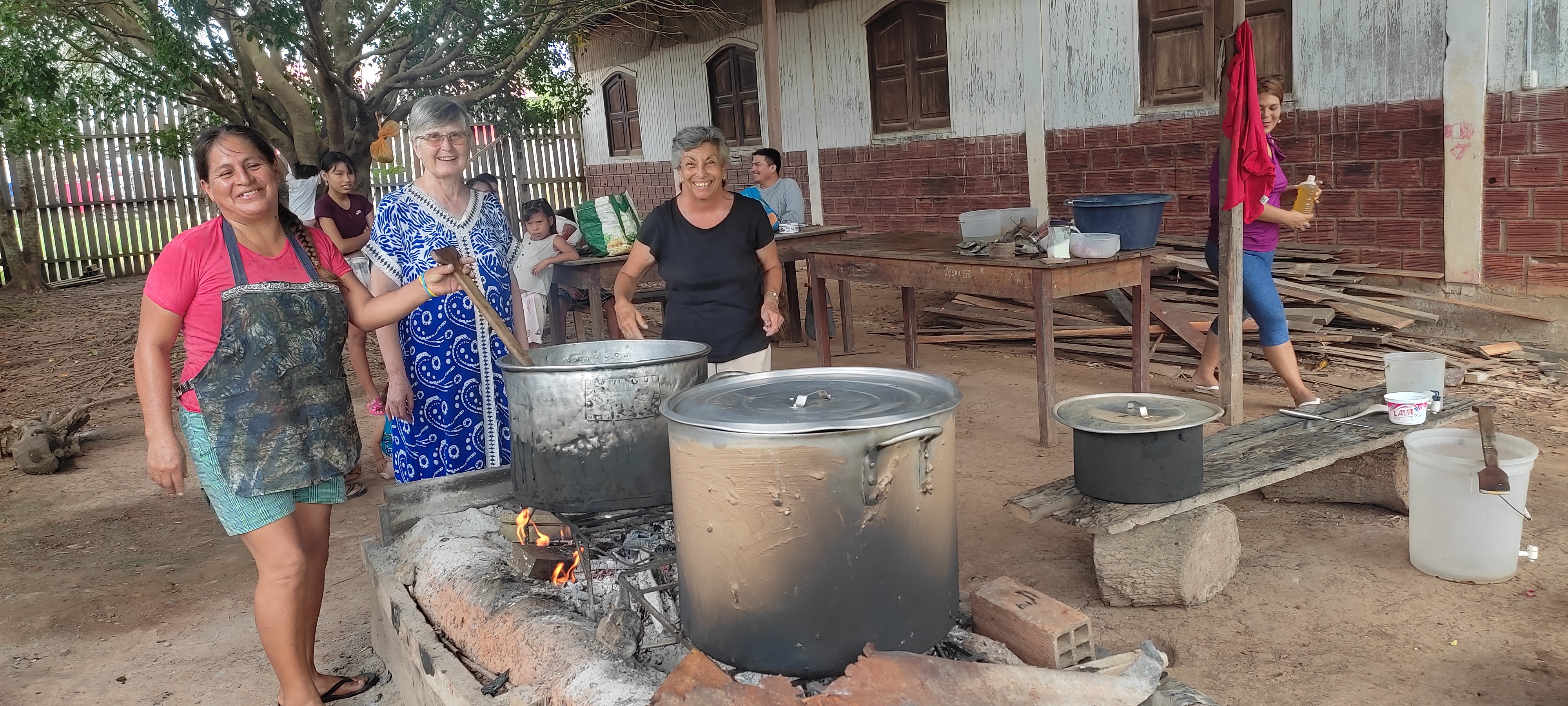
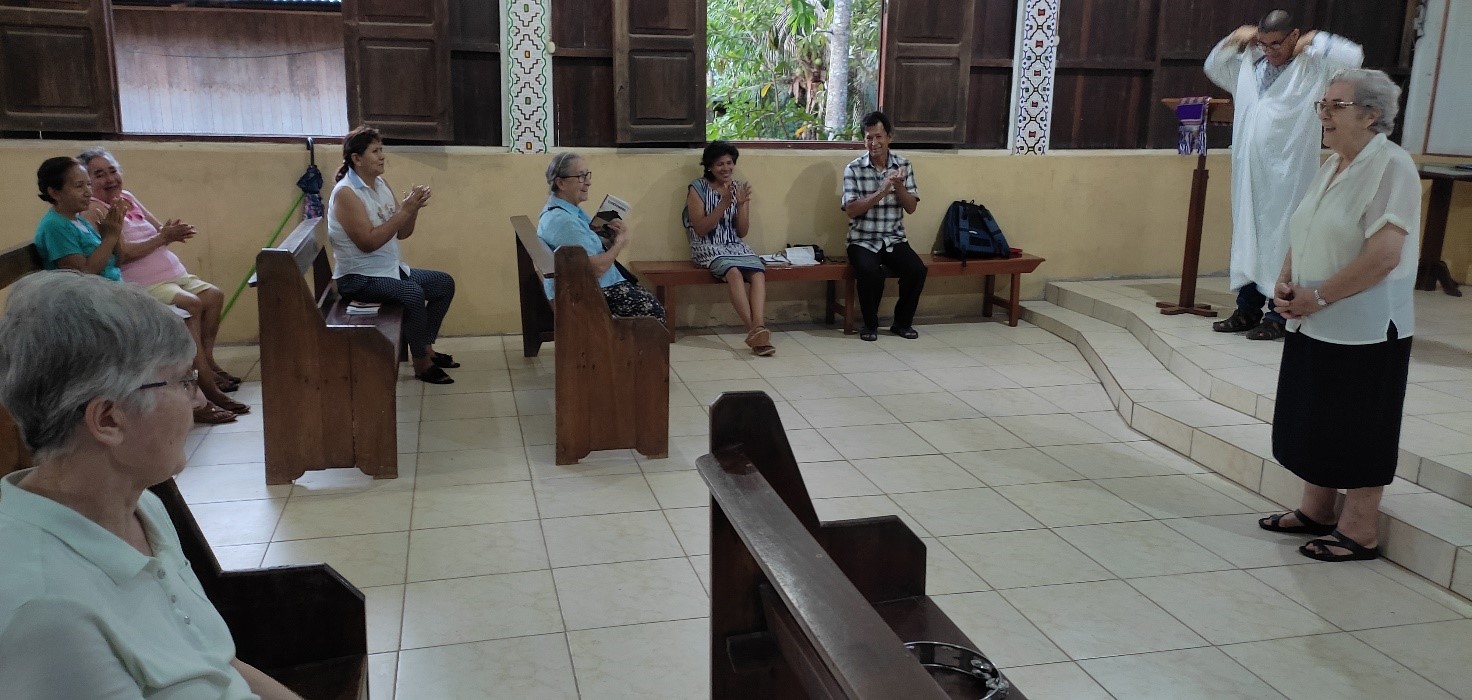

We have been at the Barrio Florido mission since 2017. It is located in the middle of the forest, on the edge of the Amazonas, a village located one hour from the city of Iquitos, with access by river and by road if necessary. don't rain too much.
There are several indigenous communities that we can visit by motorcycle and others with boats or canoes, the distances are short. There are ethnic groups Boras, Kukamas, Witotos, with their different branches, some have never been visited.
They work with groups of indigenous people who struggle to preserve their identity, and respond to the challenges of the population, etc. The community collaborates in the formation and organization of Christian communities in Barrio Florido and several surrounding villages. At secondary school, they supervise the teachers who teach religion classes.
They belong to the Parish of San Pedro Pescador in Iquitos where they collaborate with the parish priest in the training of pastoral animators. In Iquitos, a sister accompanies a group of around twenty women who practice reflexotherapy in different parishes. They do it with great interest and dedication and live it as a healing ministry.
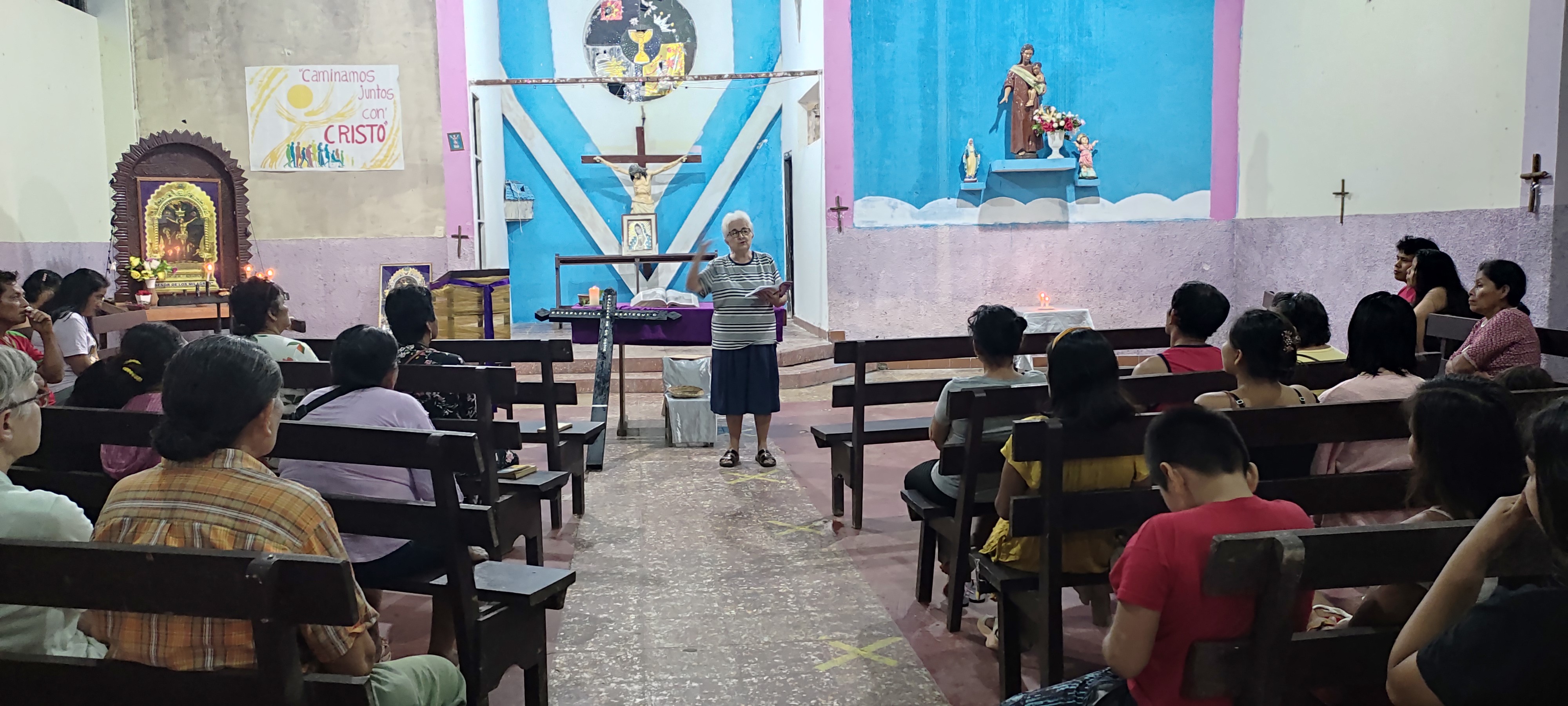
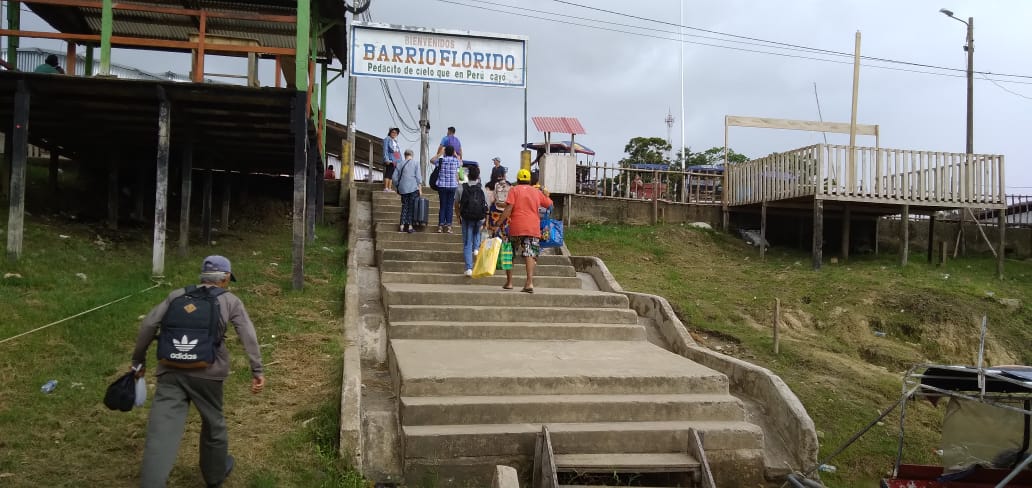
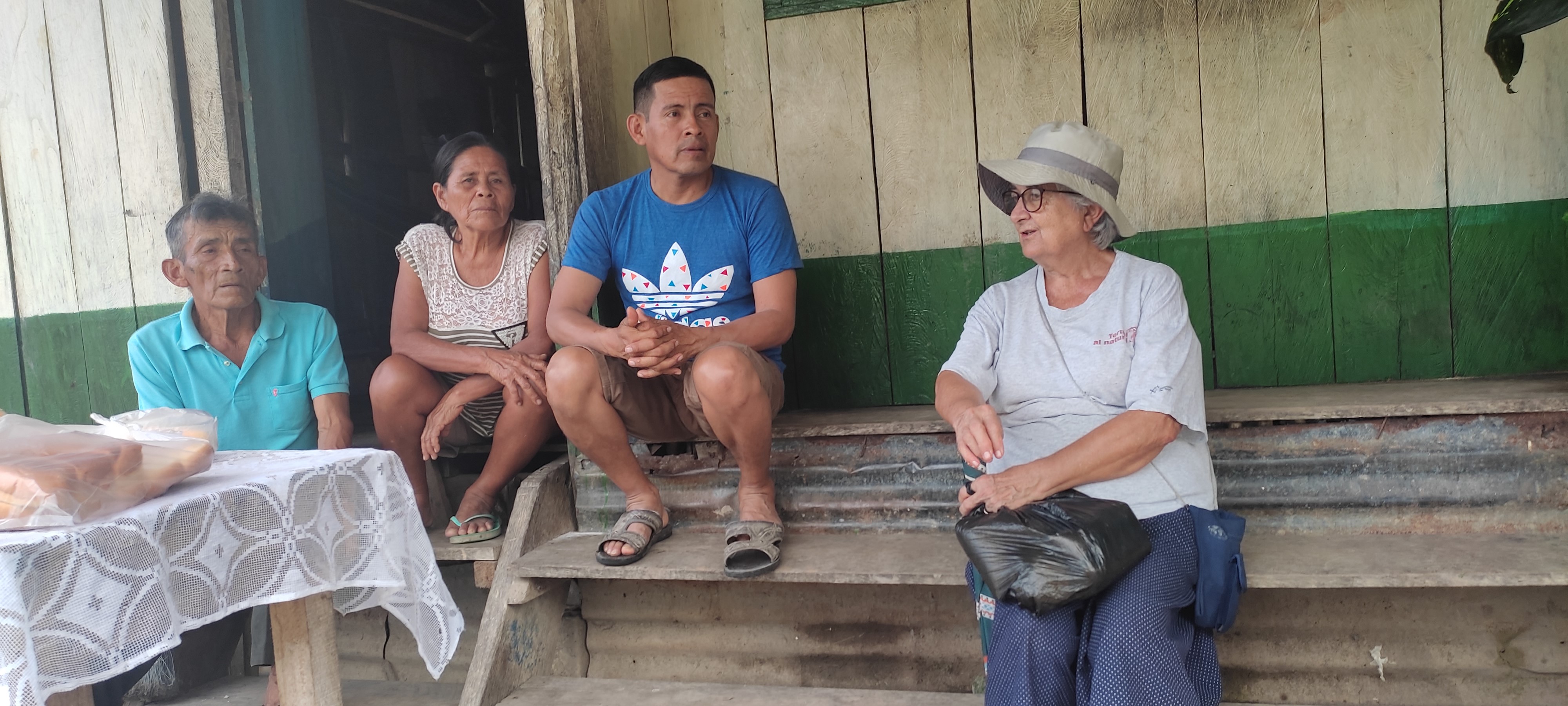
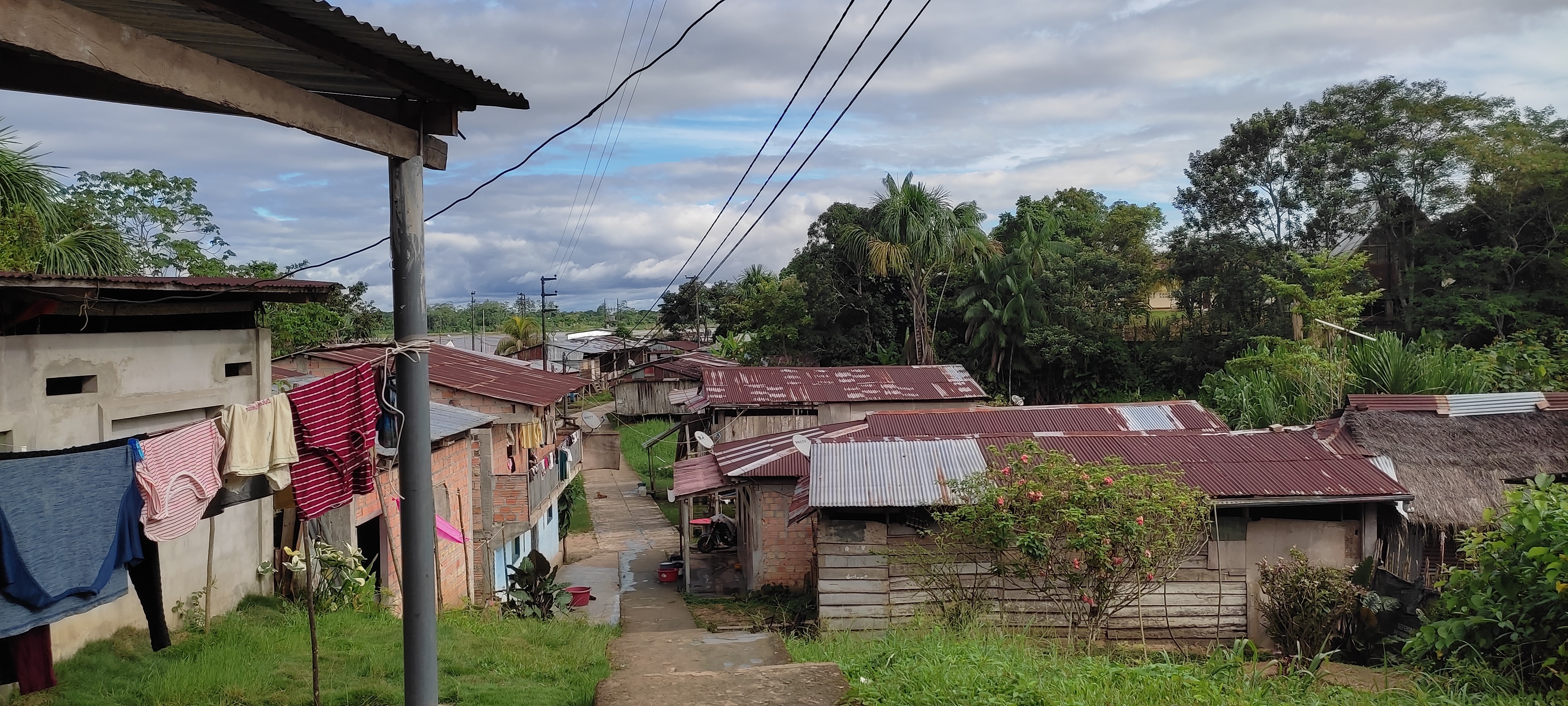
The need of having a house in Lima was felt by the missionaries of Lagunas and Nieva. In those times, all the services of the State were concentrated in the capital. On February 8, 1955 the expedition of the four founders arrived at the Port of Callao to the administration house in Lima. On March 9, 1955, they began to work in the Work assisted by four young ladies and two volunteer doctors. Over time, a great friendship developed between the doctors and the sisters and they became great collaborators and members of the ” Friends Association of the Missionary Society”, which was born in June 1959. 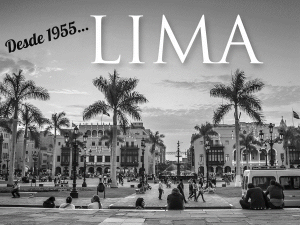 The Augustinian Fathers offer the charge of the Kindergarten Section of their School in Lima to the Missionary Society, an offer that was accepted. Since 1961, the Community of Lima, fulfilled a double objective: To take charge of the Kindergarten and to take care of the needs of the communities and missions of the forest through the administration, Vocation promotion, more attention to the group “Friends of the Society” which was increasing. Also, for some time it was house of formation of the sisters in their first stages. Little by little the idea of having two communities in Lima was felt.
The Augustinian Fathers offer the charge of the Kindergarten Section of their School in Lima to the Missionary Society, an offer that was accepted. Since 1961, the Community of Lima, fulfilled a double objective: To take charge of the Kindergarten and to take care of the needs of the communities and missions of the forest through the administration, Vocation promotion, more attention to the group “Friends of the Society” which was increasing. Also, for some time it was house of formation of the sisters in their first stages. Little by little the idea of having two communities in Lima was felt.


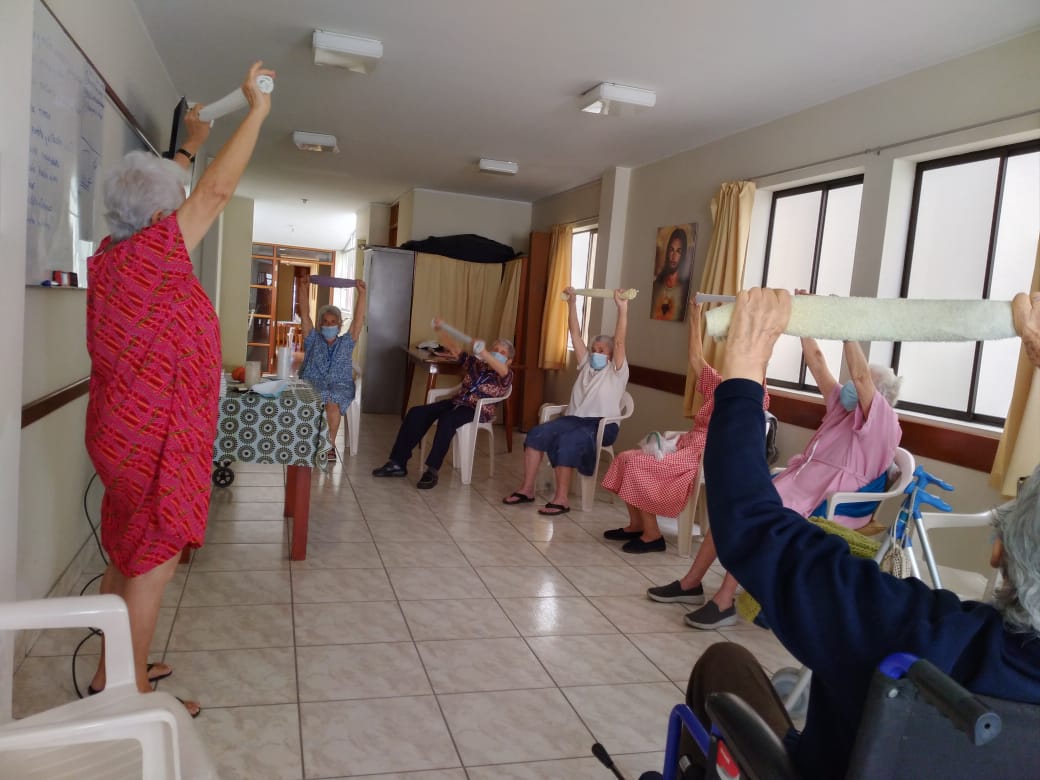
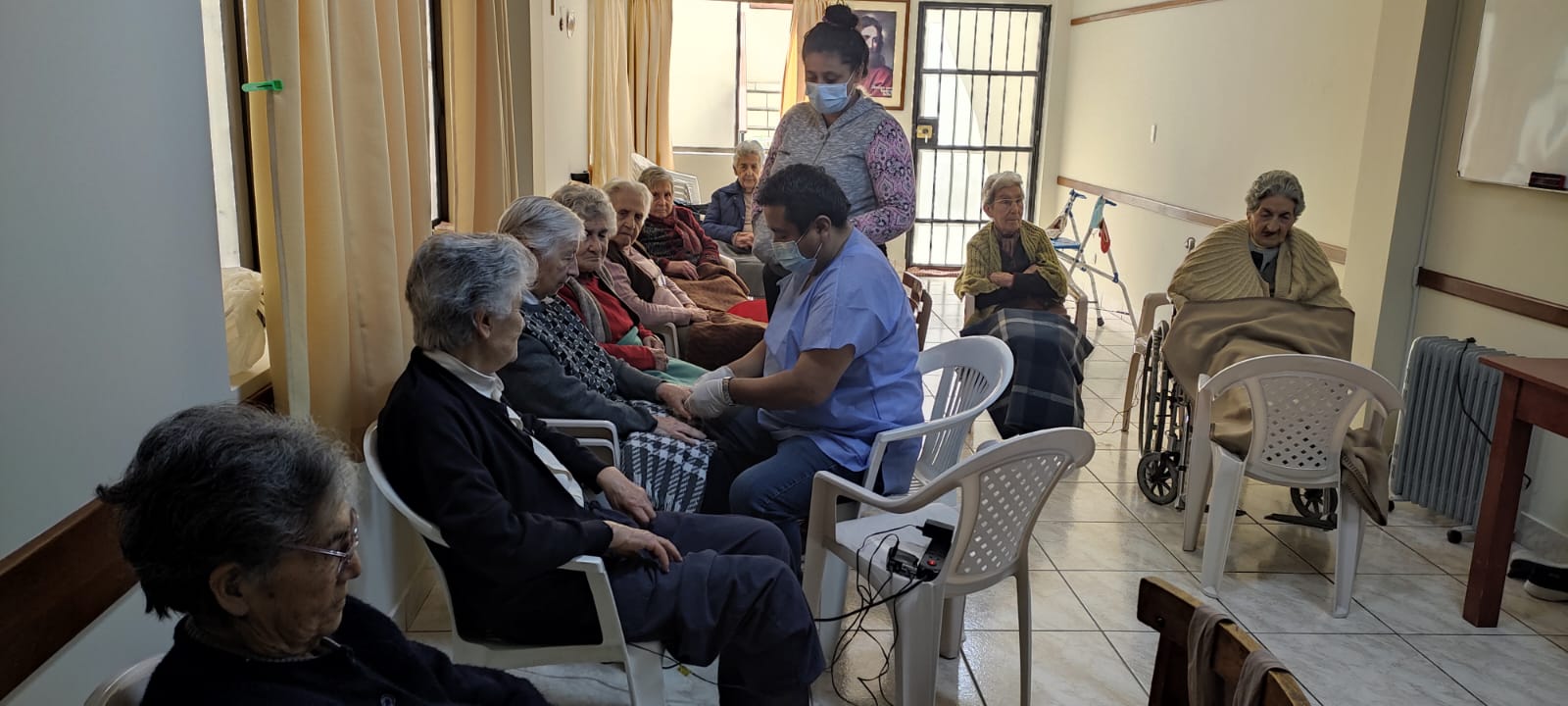
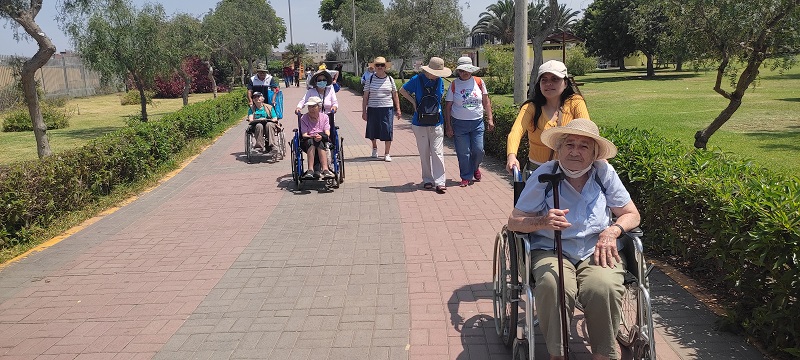
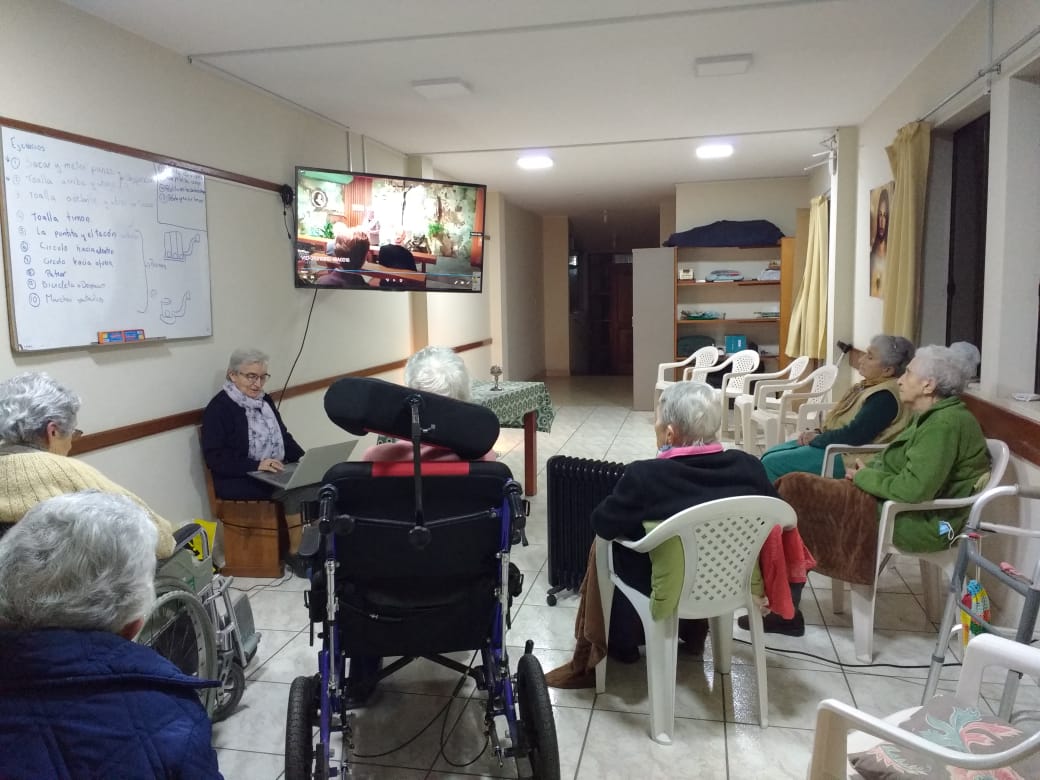

The main mission of this community is to welcome the sisters who come to Lima during the holidays, the spiritual retreat, the annual assembly, the formation and the medical check-up. They take care of preparing the house for the sisters who need to pass through Lima during the year. Also the area administration service.
This community is very active in the neighbourhood, in the parish and in other pastoral activities, such as prison pastoral care. The relationship with people, the proximity with neighbours, the familiarity with the lay people of the Missionary Company, etc. His whole life is a true testimony of fraternal life.
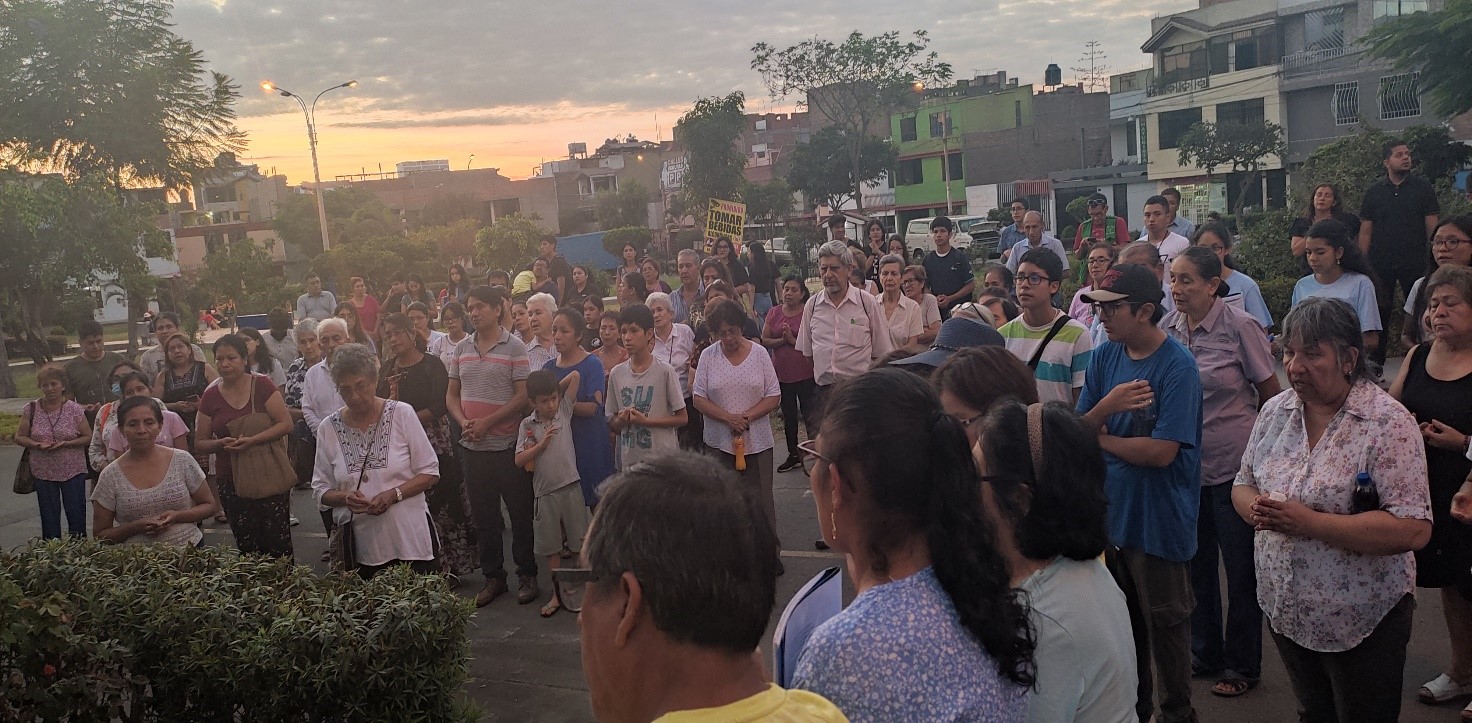
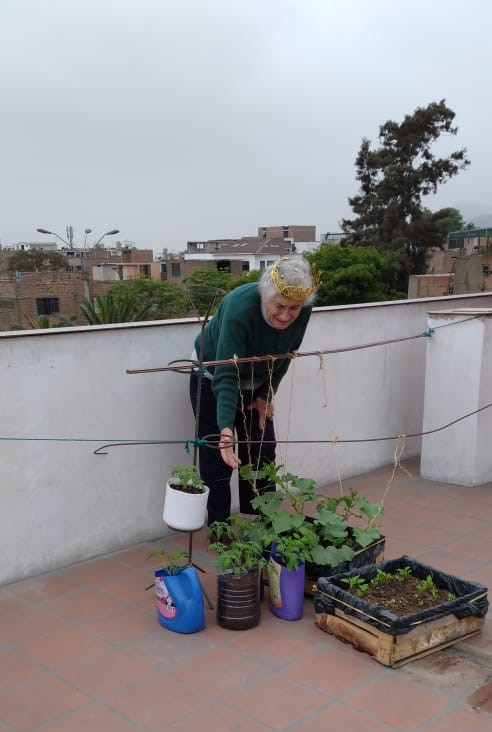
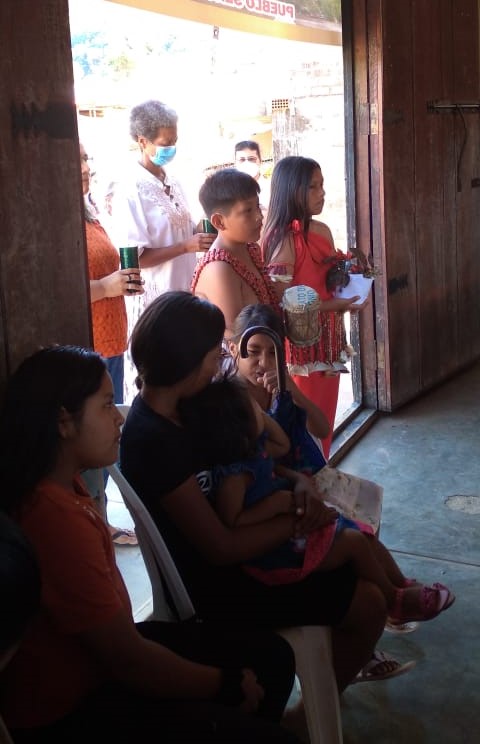

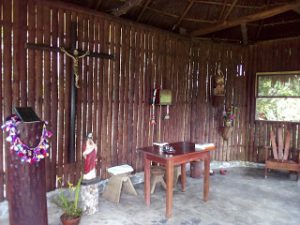 Lay people go to one of the mission sites where the sisters are in Peru. Elena Mamani shares her experience with us “I participated very lively and with great interest in the last meeting of the year of the lay community of the Missionary Company. I felt more identified as a lay member of the Missionary Company because I believe that we are integrating more and more and, above all, that we are moving forward in our missionary perspective: until now, we are transmitting our own experiences individually to make known the charism of the Company, but from now on something new has opened in our project as a lay missionary community: we will participate in the mission of apostolate in community in specific mission places. This satisfies me, encourages me. I feel that I am growing more and more in this missionary dimension of the Company to give love, service, donation, and prayers to my neighbor.
Lay people go to one of the mission sites where the sisters are in Peru. Elena Mamani shares her experience with us “I participated very lively and with great interest in the last meeting of the year of the lay community of the Missionary Company. I felt more identified as a lay member of the Missionary Company because I believe that we are integrating more and more and, above all, that we are moving forward in our missionary perspective: until now, we are transmitting our own experiences individually to make known the charism of the Company, but from now on something new has opened in our project as a lay missionary community: we will participate in the mission of apostolate in community in specific mission places. This satisfies me, encourages me. I feel that I am growing more and more in this missionary dimension of the Company to give love, service, donation, and prayers to my neighbor.
Delia Door, spent a few weeks in one of our communities, in San Lorenzo (Datem del Marañón) and shares what she experienced.
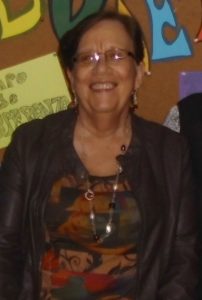 “I left Tarapoto for San Lorenzo by plane on October 4, 2017. I was a little afraid, but I put myself in the hands of the Lord; the trip on the plane was fantastic, seeing the splendor of the whole forest, the Marañon River.<p>I was received by the Sister. who took me home on a motorbike. The same day, I met Margarita Cárdenas, a layperson of the Society, who belongs to the Shawi ethnic group. A young woman very dedicated to her mission.
“I left Tarapoto for San Lorenzo by plane on October 4, 2017. I was a little afraid, but I put myself in the hands of the Lord; the trip on the plane was fantastic, seeing the splendor of the whole forest, the Marañon River.<p>I was received by the Sister. who took me home on a motorbike. The same day, I met Margarita Cárdenas, a layperson of the Society, who belongs to the Shawi ethnic group. A young woman very dedicated to her mission.
I also visited the San Lorenzo Museum, at the initiative of the Sister. María Dolores Garcia, where you can see everything she has collected over the years about the myths, rites and legends of the Shawi culture.
On Tuesday we went to La Unión. It is a very poor place but when we entered the houses and spoke with the families, they were filled with joy to see us and we shared the word of God. I also visited the boarding school and the interethnic school.

On February 18, 2002 we arrived at Port-au-Prince Airport. People had rioted outsid e because the President did not fulfill his promise. Haiti received the donation of a large amount of rice, tax-free for the poor people, and what was done was to sell it, including the tax. This was the reality of the country and in this context we arrived. On Wednesday the 27th we left for Bombardopolis, with our priest. We begin learning “kreyol”. In the afternoons we are accompanied by some young women who give us singing lessons. The three of us visit families, which allows us to get to know people by welcoming us and sharing generously from the little they have. Here we live on Providence, there are times when it would be impossib
e because the President did not fulfill his promise. Haiti received the donation of a large amount of rice, tax-free for the poor people, and what was done was to sell it, including the tax. This was the reality of the country and in this context we arrived. On Wednesday the 27th we left for Bombardopolis, with our priest. We begin learning “kreyol”. In the afternoons we are accompanied by some young women who give us singing lessons. The three of us visit families, which allows us to get to know people by welcoming us and sharing generously from the little they have. Here we live on Providence, there are times when it would be impossib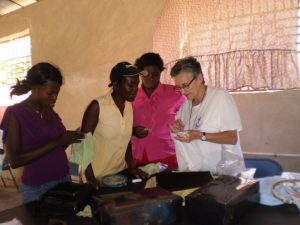 le to do something due to lack of water or necessary elements. Ecumenism is palpable in daily life, the relationship that exists with other Churches is very significant. Our house is a shelter, we live universality, because this place is so closed and lacking basic services, we gladly welcome other people who come to provide a service: doctors, NGOs, European Union Observers… and it is very This experience is significant for both parties. We distribute food in 7 schools to their school cafeterias…we are improving the quality of life, scholarships for students, water cisterns, house repairs… From 2002 to 2017, the community of Bombardopolis worked with joy and dedication on this mission . Due to lack of personnel it was closed in April 2017. And our presence in Haiti continues in the community of Port-au-Prince.
le to do something due to lack of water or necessary elements. Ecumenism is palpable in daily life, the relationship that exists with other Churches is very significant. Our house is a shelter, we live universality, because this place is so closed and lacking basic services, we gladly welcome other people who come to provide a service: doctors, NGOs, European Union Observers… and it is very This experience is significant for both parties. We distribute food in 7 schools to their school cafeterias…we are improving the quality of life, scholarships for students, water cisterns, house repairs… From 2002 to 2017, the community of Bombardopolis worked with joy and dedication on this mission . Due to lack of personnel it was closed in April 2017. And our presence in Haiti continues in the community of Port-au-Prince.


On March 4, 2014, we arrived in Port-au-Prince.
We are located in a sector very far from the city center that began to form after the 2010 earthquake. At this time there are many villages and neighborhoods, but with a very poor service infrastructure.
Our house is located in the village “Colombie”, which has 72 other houses made by the same corporation.
The first stage is insertion to learn the language, get to know the culture, and the economic, political, socio-cultural and religious reality of the Haitian people. Voodoo is a religion practiced by many Haitians.
Today we have a Missionary Childhood group, they take communion to the sick. We are teaching at a neighborhood school and supporting primary school children with scholarships, we visit families.
We form young Haitian women with desires to give themselves to the Lord in the Missionary Company.
The Haitian population shows a capacity for endurance in the face of suffering, violence, extreme hunger, injustice and corruption of the rich and politicians.
In recent years, the neighborhoods have been in the hands of heavily armed bandits, episodes of crimes, massacres, kidnappings and insecurity have multiplied in all the neighborhoods of Port-au-Prince and have led the country to total decline.

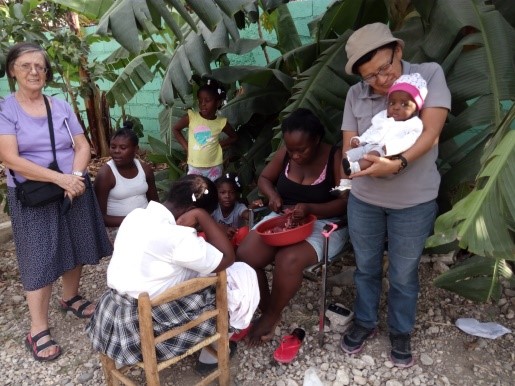
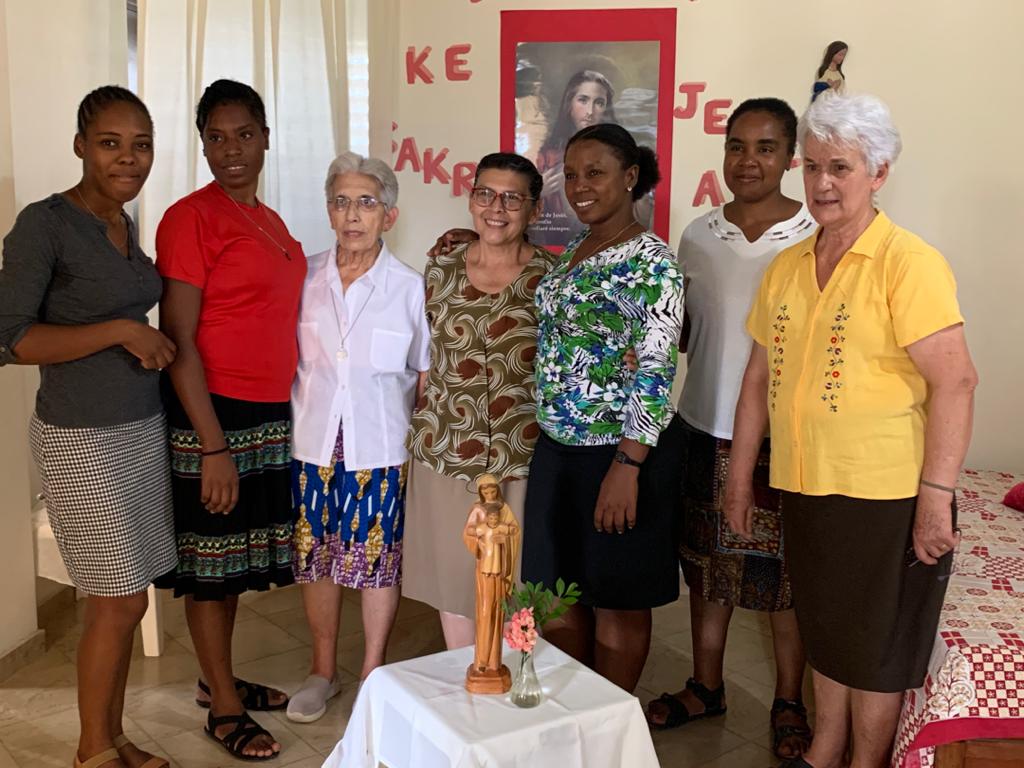
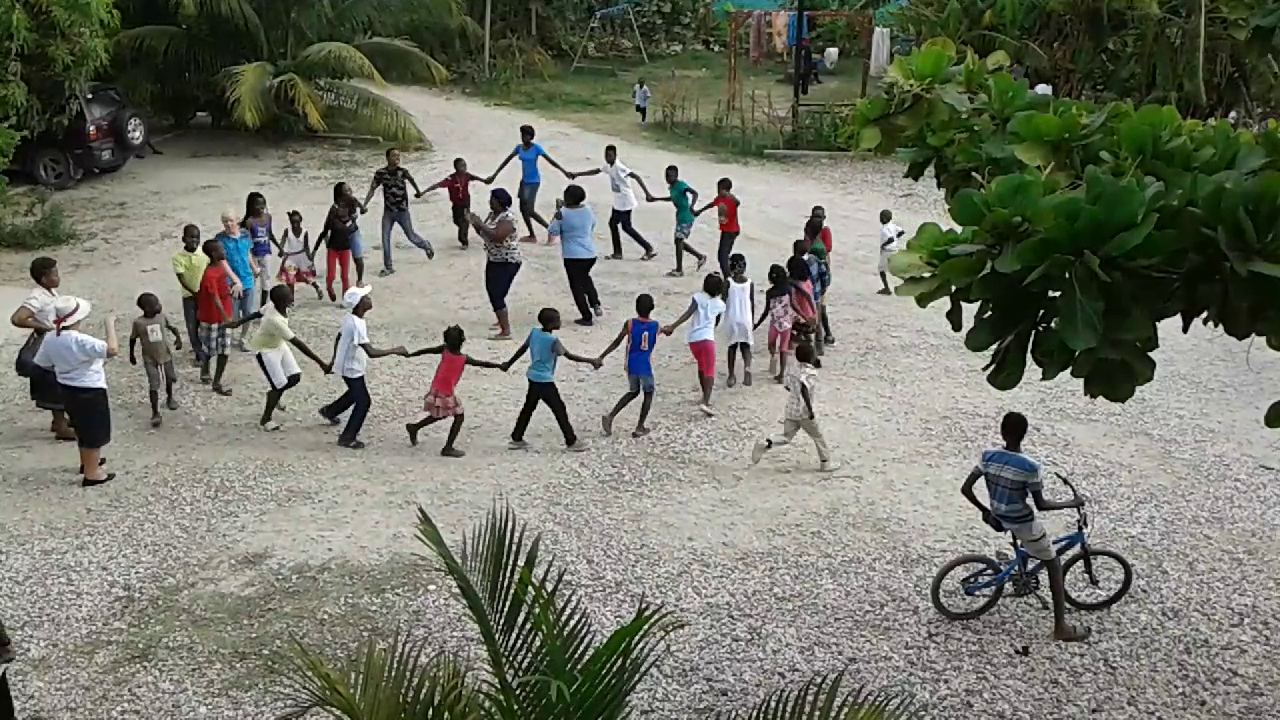
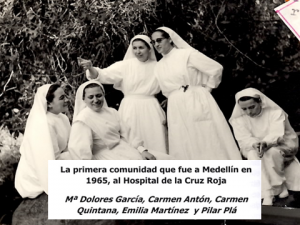 The presence of the Missionary Society of the Sacred Heart of Jesus, in Colombia, immediately places us in tune with its people on the Pacific coast, especially with Afro-Americans and the indigenous people. Human groups which, with their experience, have taken us to the soul of their ethnic group and the sense of community life. In February, 1965, the first house of the Missionary Society is opened in Colombia, in the Children’s Hospital of the Red Cross in Medellin, as a support to extend to other missions of this country. The first community of five sisters, who were developing their missionary work in Peru, is appointed. In 1968 the mission of Docordo was founded, covering approximately 3,000 km2, with a total of about 30 villages and a population of about 6,000 inhabitants. There are Afro-Americans in Docordo. They worked in the school, in the dispensary in their journeys to other villages, gave courses of how to communicate through the local radio, to the indigenous people and school-going borders… On January 14, 1972, the sisters arrived to establish themselves permanently in Pichimá, a mission of Waunana tribe. Adult literacy was a task that needed dedication. An artisan cooperative was made, a privileged means for the freedom of women. In 1973 Orpúa was founded, an Afro-American mission, later, came Buenaventura, Callelarga, Guapi …
The presence of the Missionary Society of the Sacred Heart of Jesus, in Colombia, immediately places us in tune with its people on the Pacific coast, especially with Afro-Americans and the indigenous people. Human groups which, with their experience, have taken us to the soul of their ethnic group and the sense of community life. In February, 1965, the first house of the Missionary Society is opened in Colombia, in the Children’s Hospital of the Red Cross in Medellin, as a support to extend to other missions of this country. The first community of five sisters, who were developing their missionary work in Peru, is appointed. In 1968 the mission of Docordo was founded, covering approximately 3,000 km2, with a total of about 30 villages and a population of about 6,000 inhabitants. There are Afro-Americans in Docordo. They worked in the school, in the dispensary in their journeys to other villages, gave courses of how to communicate through the local radio, to the indigenous people and school-going borders… On January 14, 1972, the sisters arrived to establish themselves permanently in Pichimá, a mission of Waunana tribe. Adult literacy was a task that needed dedication. An artisan cooperative was made, a privileged means for the freedom of women. In 1973 Orpúa was founded, an Afro-American mission, later, came Buenaventura, Callelarga, Guapi …


On September 24, 1971, the sisters moved to a new house located in the Las Violetas neighborhood. Since then, the house has been a regional home for older and sick sisters.
Each of the sisters, according to their possibilities, carries out pastoral work in the parish in different activities and in the other neighborhoods of Medellín.
The sisters accompany the groups, support the general catechesis. They also accompany families, prayer groups, Christian formation, during visits they advise the sick, advise, console and encourage people who suffer. They try to do everything the style of Jesus.




This is the situation we live in. The young people died in confrontations or were murdered because they were former guerrillas. Much sadness and many questions with a prayerful attitude towards this reality.
This year, due to the situation of violence, we were not able to visit, as usual, the towns in the villages where “the dining rooms” are located. Another strong work of Guapi is the project for disabled children.
Twice a week we go to the prison and on Wednesday there is a literacy class for a small group of three prisoners.
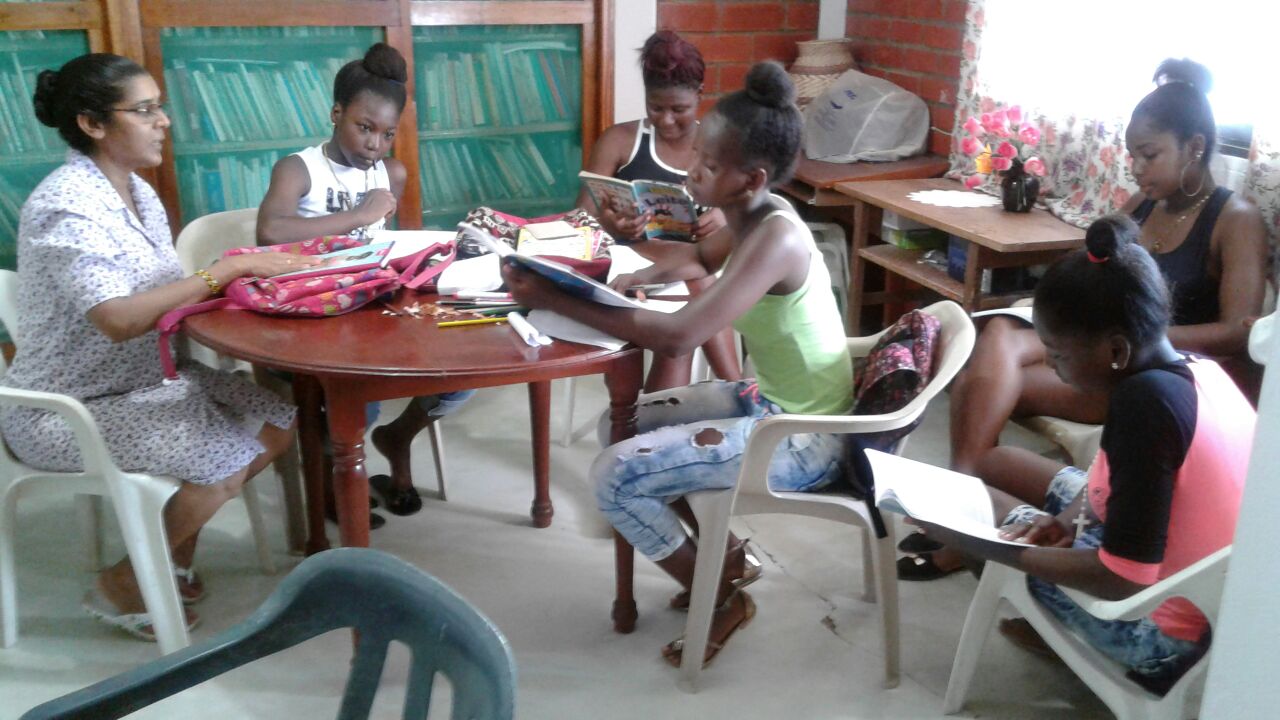
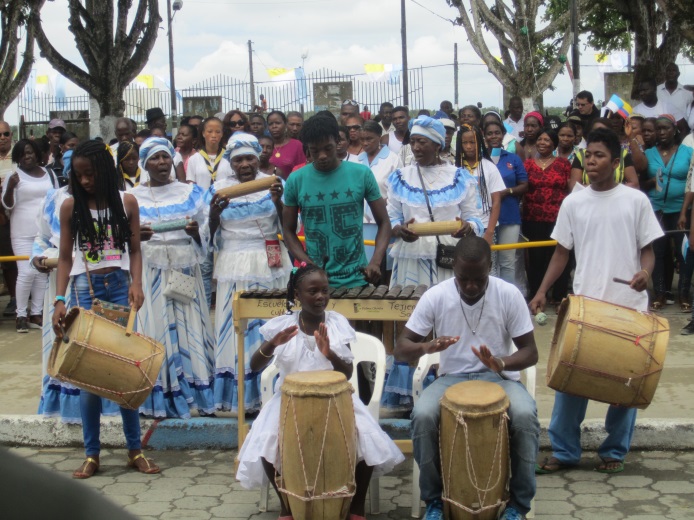
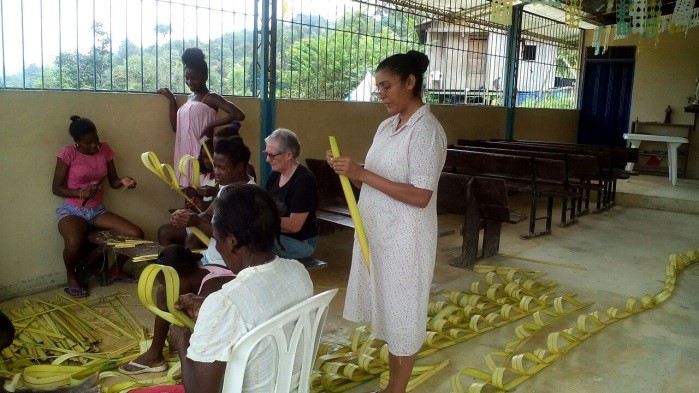


The reality of our advanced age, with its respective health limitations, does not take away our hope of living and working together, making the Kingdom present among our brothers.
Buenaventura is a city of great social conflicts, generated by violence, the lack of opportunities and the impoverishment of the people who live in a port rich in resources.
Generators of impoverishment and violence: Drug trafficking. Illegal armed groups. Those reinstated who continue to commit crimes. The police abuse their authority and violate human rights. Political clientelism. Unemployment. Domestic violence. Displaced. The proliferation of sects.
Our missionary task is to take care of the neighborhood chapel, distribute food consignments, visits to families and groups of older people. We support patients and their families within the CVS partnership by “skill-sharing” – globally promoting people with disabilities. promote the active responsibility of each one of them and their families in society and in the Church. We provide opportunities for personal and social growth through: training, rehabilitation and work.
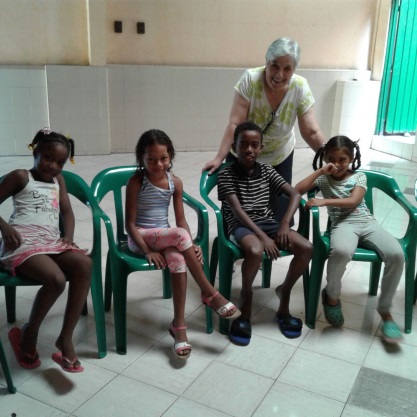

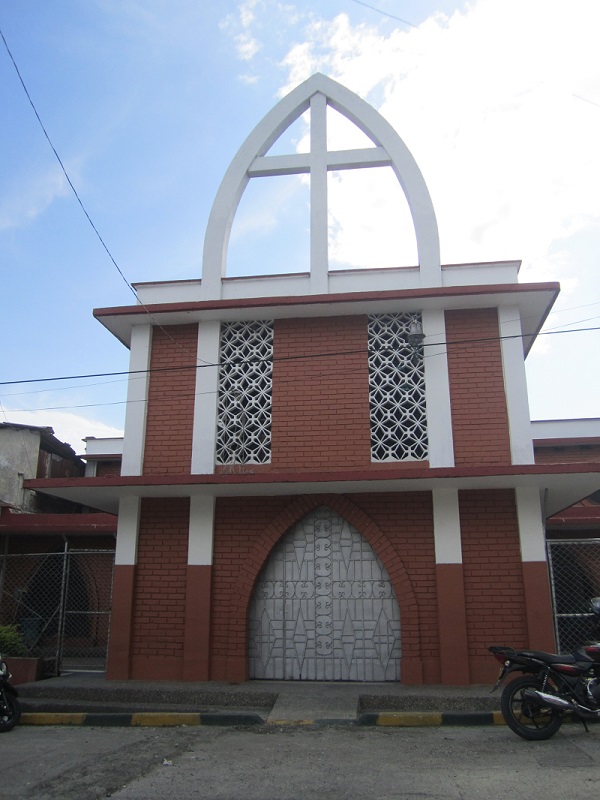
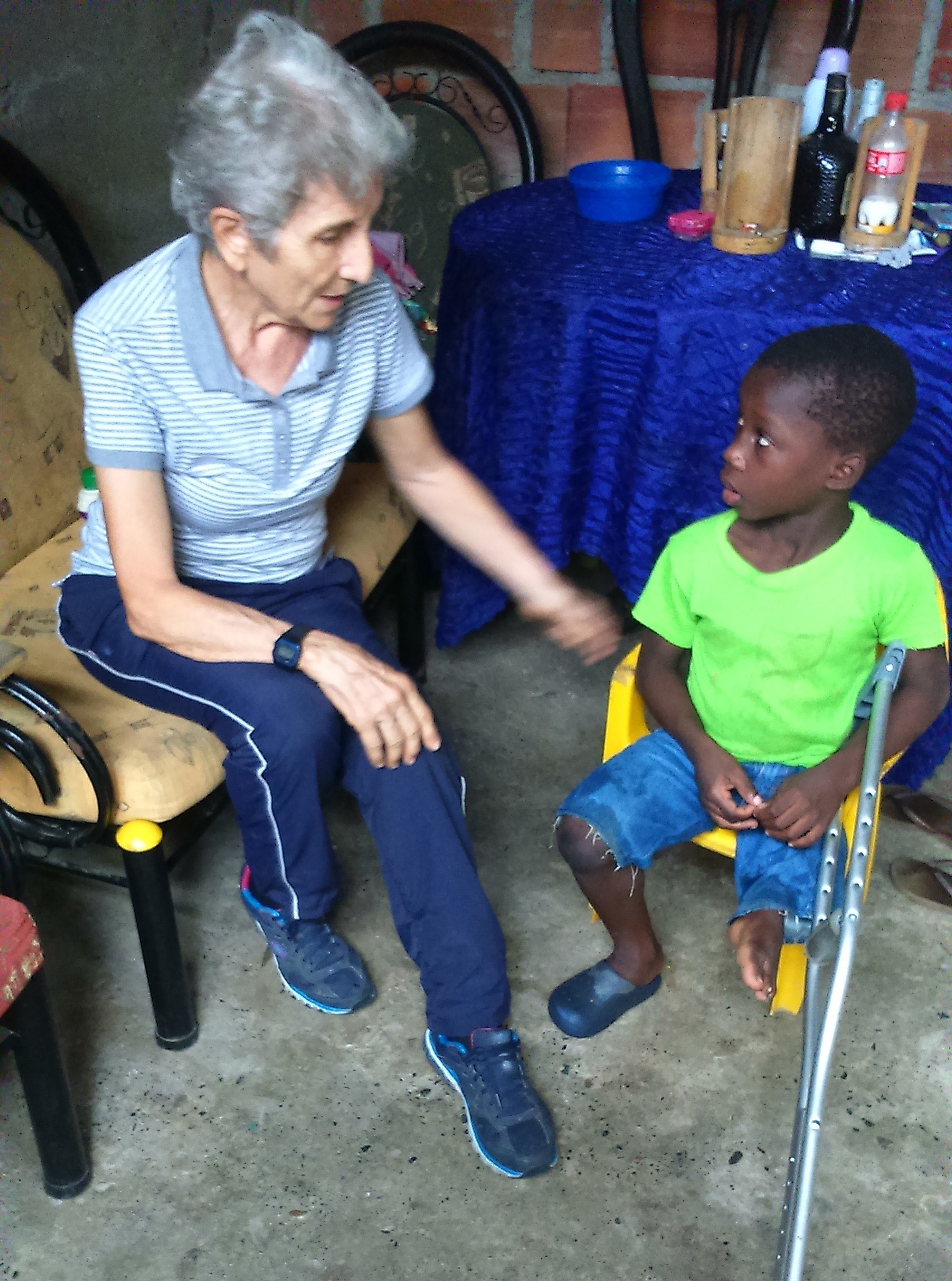
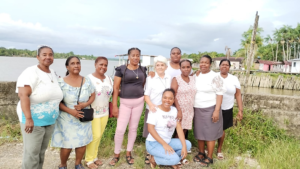 We are a group of lay women, friends united in faith and love for the Sacred Heart of Jesus. A love that was encouraged and discovered by the closeness that many of us had with the different sisters of the Missionary Company.
We are a group of lay women, friends united in faith and love for the Sacred Heart of Jesus. A love that was encouraged and discovered by the closeness that many of us had with the different sisters of the Missionary Company.
Sharing life and events with the sisters has meant that over the years, each of us, Lay People of the Missionary Company of the Sacred Heart of Jesus, have the certainty of the greatness of the Love of the Sacred Heart manifested in each of their children.
It is the love for those in need that made us all fall in love with this Great Mission of the Company.
This Love made us find the precise and necessary words and actions to go on mission, starting with our homes, the places where we work and the community in general. Help improve the homes of some people in need. From the program for people with disabilities we visited families, which allowed us to live another reality and opened new horizons for us to give ourselves in other areas. On the other hand, an apostolate has been carried out in the municipal prison for many years.

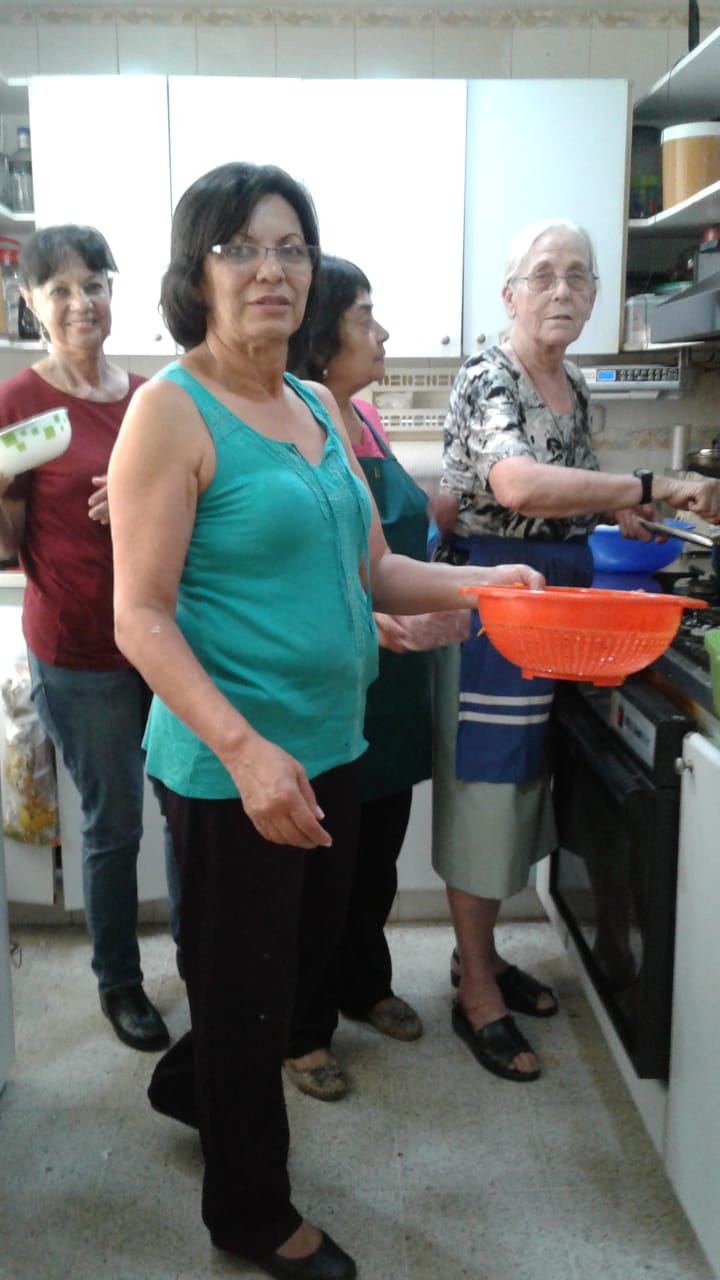
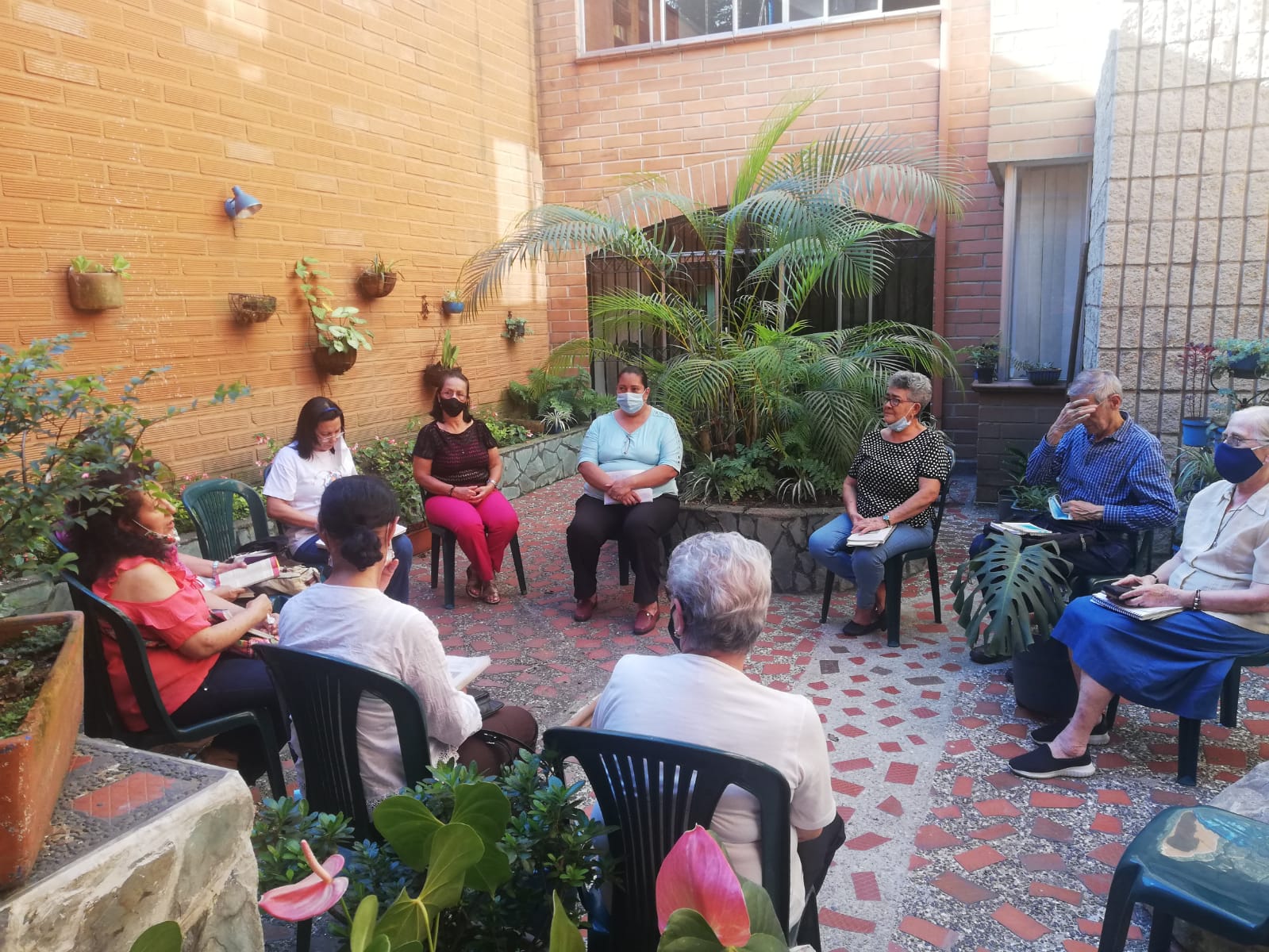
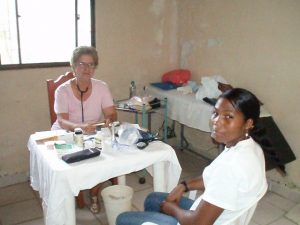 Working on Orpua
Working on Orpua